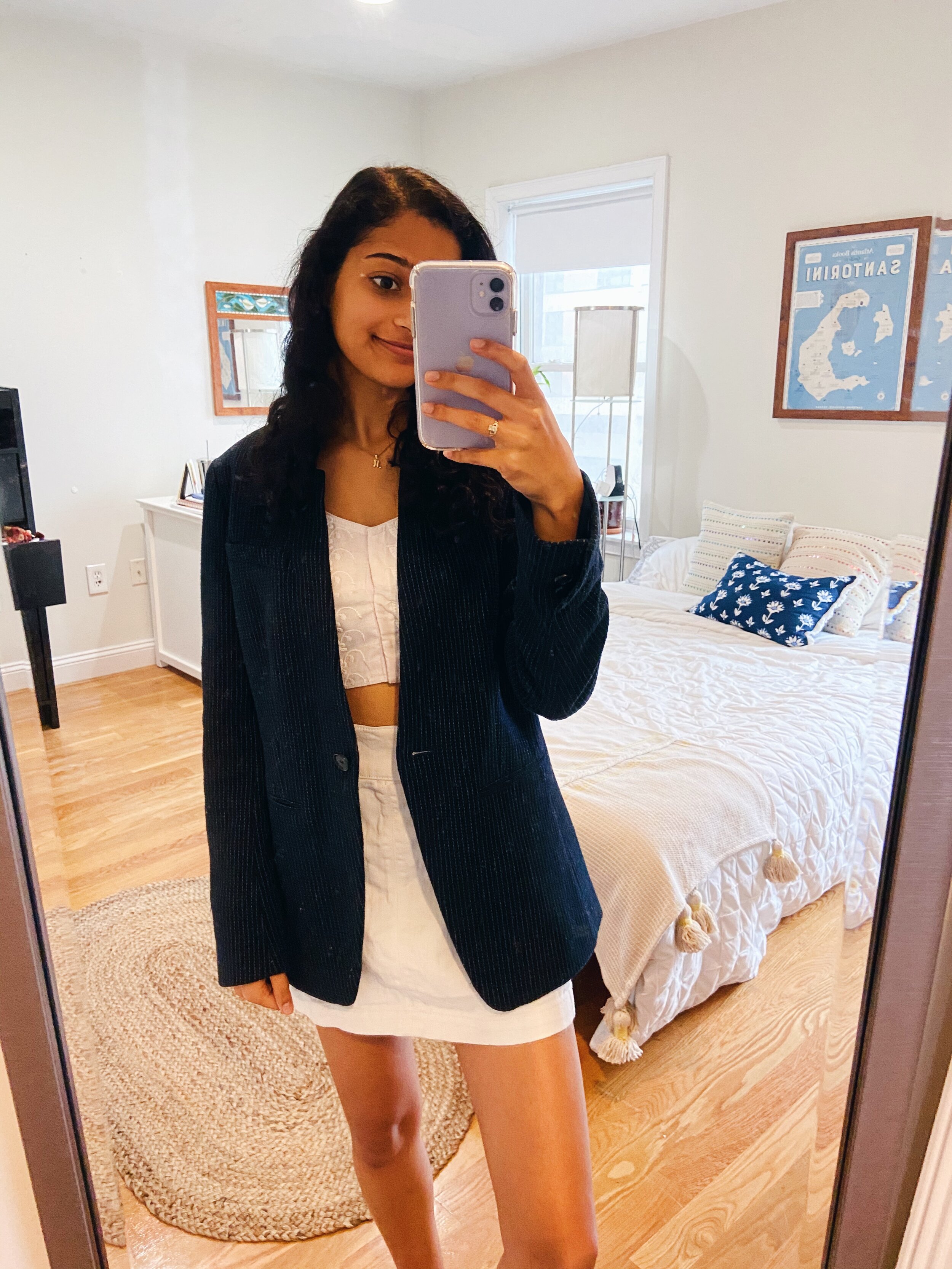COVID Casual
By Meghna Iyer, Fashion Columnist | Photography by Anjali Dhawan
Have you ever wondered why you picked out a certain color to wear today? Or why you chose a specific texture of fabric? It might seem like it was a split-second decision, but more goes into these simple decisions than you’d think. Your choices are a facsimile of psychological principles that predispose your mind towards a specific outfit. Alongside this, occasions and places also dictate wardrobe decisions. In essence, fashion is an application of psychology.
The “Halo Effect”, for example, explains how first impressions persist in our lives, pushing us towards certain clothing over others. The effect occurs through a phenomenon by which people allow their previous judgements to determine their thoughts about someone, whether or not this judgement is biased. It is the embodiment of judging a book by its cover and we just can’t help not doing it. Dawnn Karen, a professor of psychology at the Fashion Institute of Technology, describes the psychology of fashion as the “study and treatment of how color, image, style and beauty affects human behavior, while addressing cultural norms and cultural sensitivities”. As society is urging the fashion industry to become more culturally and socially inclusive, this is becoming an increasingly important field of study. This urgency has only increased during the COVID-19 pandemic, an unprecedented, apocalyptic period of time that has thrown a wrench in these psychological principles. We have been granted a new forum for added creativity in our lives by challenging the social norms of fashion.
Fashion certainly has its unspoken rules. Certain items of clothing make us happy because of the associations they hold, be it with people, memories, or locations. There are colors that are known to boost your mood and optical illusions that can help one look a particular way. The widely-regarded rule of not wearing white as a wedding guest is one example, but there are several more that are more subtle and nuanced. As the years go by, it’s become socially acceptable to wear bike shorts in public or, if you’re Hailey Bieber, letting your thong peek through your outfit. We’ve also grown to respect all types of perspectives; designers and influencers alike are starting to explore conservative, body-positive, and genderless styles, to name a few. However, the amount of progress we’ve made doesn’t entirely undo the dress code we’ve cemented over the years. Jeans are often still unacceptable at work when casual clothing is widely accepted outside of it. Many schools still employ strict uniforms — call it the hatred for my old uniform, but I always suspected they were one big marketing scheme orchestrated by Banana Republic.
But, as it turns out, psychology is the reason we have this dress code. A study done at Northwestern University compared performances between two groups of people in white lab coats. One was told that it was a doctor’s coat and the other group was told it was a painter’s coat. Those in the doctor’s coat group were far more successful in their activities, largely because they perceived themselves that way based on what they were wearing. This translates to wearing professional, or at the very least business casual, clothing to work or school. You are more likely to be productive and effective in your tasks, which is what we all seek, and struggle, to achieve. We wear crop tops, silk slips, and other revealing clothing outside. Nights out and trendy restaurants are equatable to the runway for these items of clothing; they belong in these places. Now that nights out are no longer feasible and most gyms have closed their doors for fear of COVID-19, bike shorts and crop tops have been repurposed, even entering the workplace.
We’ve all worn pajamas to our Zoom classes or shorts below our interview-appropriate blouse; traditional work attire has become an anomaly during the pandemic. Most of the rules we’re familiar with have disappeared. Blazers are now incorporated in street style and comfy clothing has made its entrance into the workplace. Strangely enough, our productivity isn’t affected by this change in style. Psychology (here it is again) has a rule called the “Red Sneaker Effect.” If you intentionally choose to dress a certain way against the specific dress code of a location like the office, your productivity isn’t harmed. You’ve consciously chosen to go against what society has placed into your mind, and I think this effect gives us a lot of potential. Alongside more inclusive offices and mindsets, we can bring our heritage and identity into our clothing without worry that it will backfire against us at work or at home, a worry no one should have to bear. Fashion has always had the bad habit of taking after Eurocentric ideals, but it should be more than that. It should be a way of life as well as an expression of identity and values. To me, this effect is our chance to let go of social norms completely and forge our own paths, both in fashion and in our daily lives.




